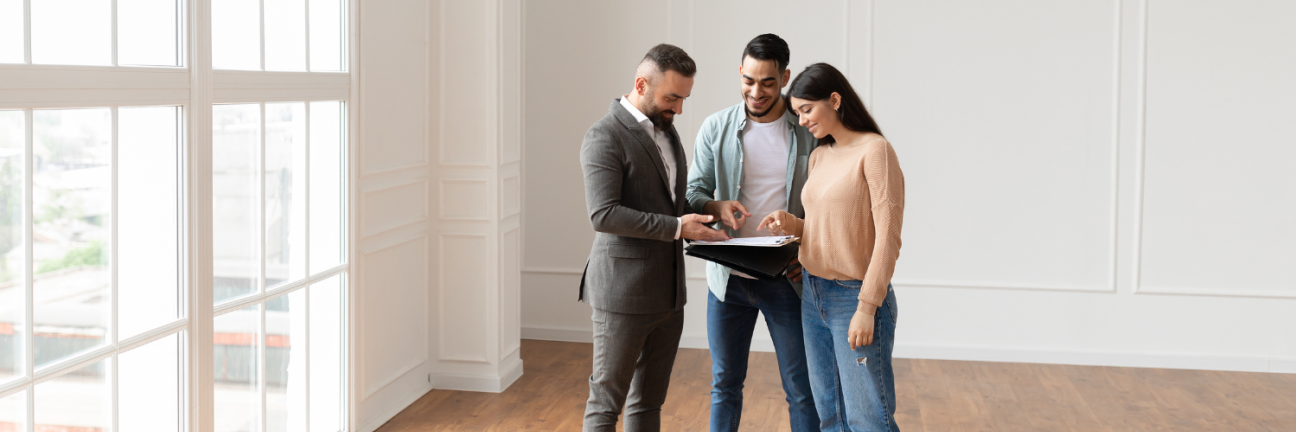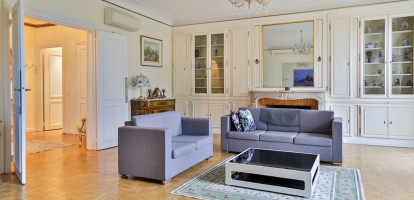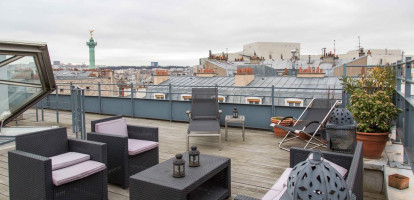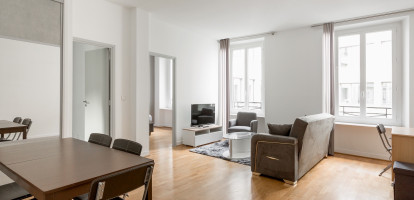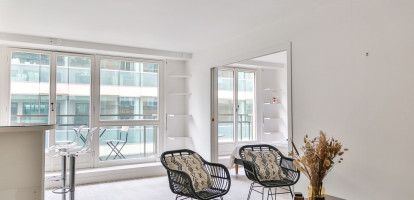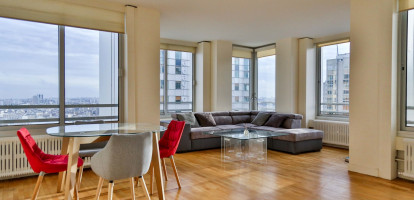What is the Inventory of Fixtures (état des lieux)?
The inventory of fixtures, also known as an inventory check or move-in/move-out inspection, is a crucial step in any rental process. This document, completed by both the property owner and the tenant or their representatives, records the condition of the property and its fixtures at the beginning and end of the rental period. It is an essential tool to avoid disputes and establish clear responsibilities for any damage or repairs during the tenancy.
A well-conducted inventory of fixtures protects both the landlord and the tenant. It ensures the landlord's property is left in the same condition it was rented, with allowances for everyday wear and tear (vétusté), which refers to the natural aging of the property. For the tenant, it prevents them from being held responsible for any pre-existing damages. Therefore, the inventory should be detailed, accurate, and completed at the move-in and move-out stages.
The Landlord's Responsibilities for the Inventory of Fixtures
As the property owner, the landlord has several key responsibilities in conducting a thorough and fair inventory of fixtures.
Providing a Safe and Well-Maintained Property
One of the primary obligations of the landlord is to provide a habitable property. The property must meet health and safety standards, including functional utilities like water, electricity, and heating, and adequately maintained fixtures such as doors, windows, and plumbing. The property should contain all elements listed in the rental agreement. The landlord is responsible for ensuring that all these elements in the rental are in good working condition at the start of the lease.
Initiating the Inventory of Fixtures
The landlord is responsible for initiating a joint inventory of fixtures, meaning both the landlord and tenant (or their representatives) must be present. If this is impossible, the landlord must call in a court-appointed bailiff (commissaire de justice).
Following these procedures ensures the landlord can rely on a self-conducted inspection to claim damages. The landlord is not entitled to withhold any sums for alleged damages without a proper inspection for comparison. However, if the absence of a joint inspection was not due to the landlord's fault, they may still rely on an inspection they conducted alone, provided it is well-documented.
Procedures for Conducting an Inventory of Fixtures: Amicable and Disputed Methods
- Amicably between the tenant and the owner or between the tenant and a professional representing the owner (real estate agent, property manager, or notary).
- In case of refusal: If either party refuses to attend, sign, or conduct the inventory, both parties can call a judicial officer to perform the fixture inventory. The officer will notify both parties by registered mail at least seven (7) days in advance. This step is called a disputed inventory ("constat locatif").

Using a Standardized Format to Document the Inventory of Fixtures
The inventory of fixtures must adhere to a standardized written format, either in paper or electronic form. This format is vital for comparing the rental property's condition at the start and end of the tenancy.
The inventory document can exist in one of two ways:
- Single Document: It appears as a single form with two columns—one for the property's condition upon the tenant's arrival and another for the condition upon their departure.
- Separate Documents: Two distinct inventories, one for move-in and one for move-out, are easy to compare due to a similar format.
The property owner is responsible for ensuring that the inventory document includes all legally required information, such as:
- Type of inventory: Entry inventory or exit inventory
- Date of the inventory
- Location of the property: Full address of the rented property
- Names of the parties: Names of the tenant and landlord and the address or headquarters of the landlord's representative (if applicable) and, if applicable, names and addresses of any individuals authorized to conduct the inventory
- Individual meter readings for water or energy usage: when utility charges aren't paid at a flat rate
- Keys or other means of access: A list of all keys or access codes for private or shared areas
- A detailed description for each room of the condition of floors, walls, ceilings, fixtures, and furniture in the property. This document can include notes, comments, or images to document the apartment's condition.
- Signatures: The document must be signed by all parties, including the tenant, landlord, or authorized individuals who conducted the inventory.
Utilizing a Wear and Tear Guide
While not mandatory, landlords could use a wear and tear guide (grille de vétusté) to help differentiate between normal wear and damage caused by negligence. This tool is especially helpful in determining if any repairs or deductions from the tenant's deposit are justified, allowing both parties a fair and transparent process.
Offering Modifications on Inventory of Fixtures Document
If the tenant discovers any defects within ten (10) days of the move-in inventory, the owner must accept modifications to the document. The tenant can also request a check of the heating system during the first month of the cold season.
Handling the Security Deposit
After the move-out inventory, the owner must return the tenant's security deposit within one month if there are no damages. If damages appear, the owner has up to two months to return the deposit, deducting necessary repair costs with justification, such as a repair invoice.
Resolving Disputes
If there are disagreements about the inventory, the owner should attempt to resolve the issues amicably by involving a conciliator or pursuing legal options if necessary.
The Tenant's Rights during the Inventory of Fixtures
Right to Report Defects During the Inventory of Fixtures
At both move-in and move-out, tenants have the right to carefully inspect the property and report any defects during the fixture inventory. During the entry inventory, it's crucial to report any pre-existing damages—such as broken windows, scratched floors, or malfunctioning appliances—so the tenant won't be held responsible for them later. Similarly, tenants should ensure that only damages beyond normal wear and tear are noted during the exit inventory, protecting their security deposit from unfair deductions.
The Tenant's Responsibilities for the Inventory of Fixtures
Responsibility for Damage
At the end of the lease, the tenant must leave the property in the same condition it was in at the start, minus normal wear and tear. The tenants must respond to any damage or losses caused during their tenancy unless they can prove that these were not their fault or resulted from "force majeure." Normal wear and tear, which occurs naturally over time, cannot be charged against the tenant's deposit.
Filling Holes and Painting
Tenants may need to fill large or numerous holes in the walls, but small holes are typically not considered the tenant's responsibility.
Painting is generally not required unless the tenant has caused excessive damage (e.g., stains from smoking or cooking). If the tenant repaints the walls, they should avoid extreme colors or patterns.
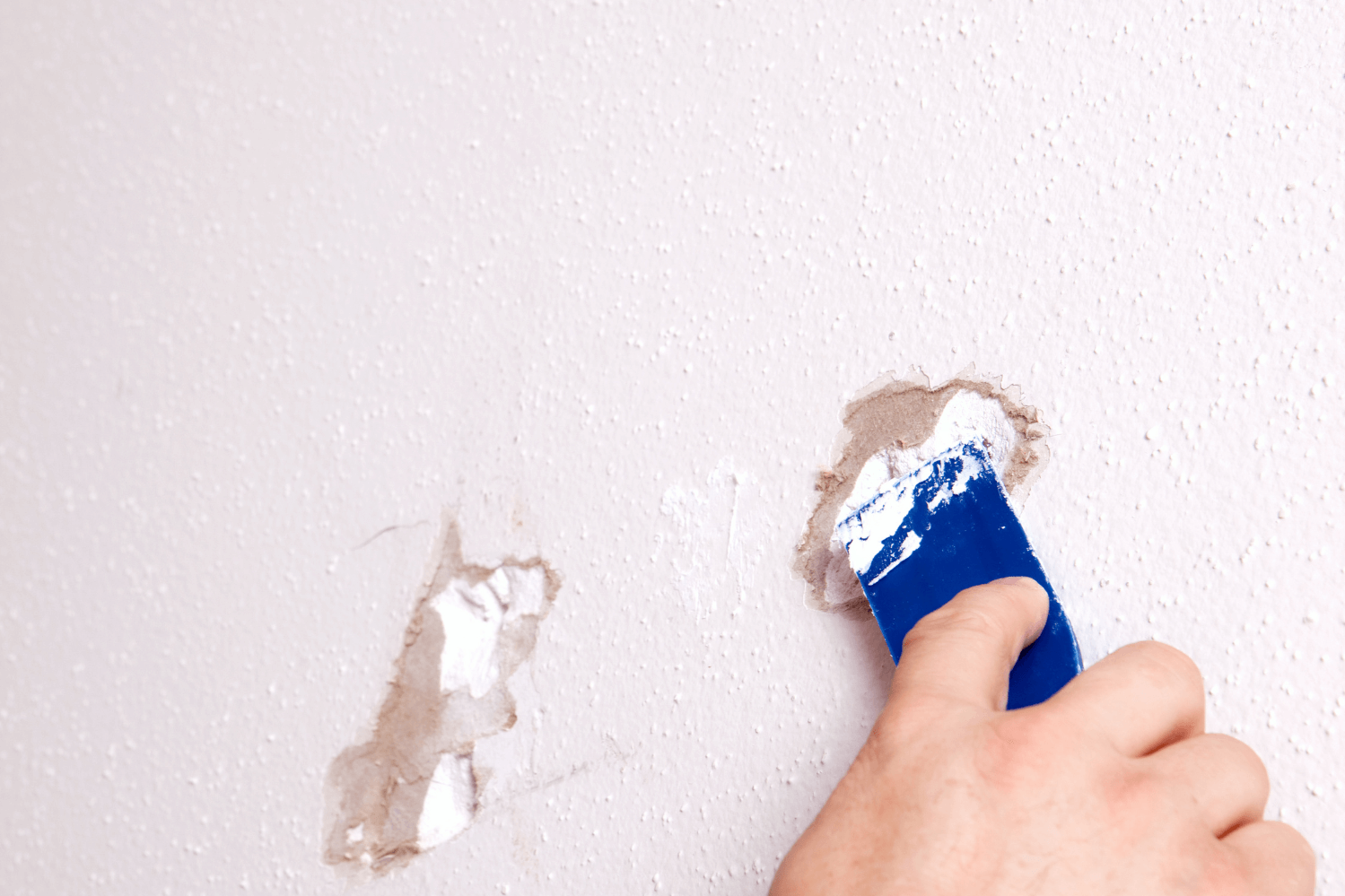
Pay Rent and Rental Charges Until the Lease Ends
The tenant must continue paying rent and rental charges until the lease officially ends, even after giving notice. Deducting the rent from the security deposit is unlawful.
Attend and Sign the Exit Inventory
The tenant must attend and sign the exit inventory of fixtures, just like the entry one. If the tenant refuses to attend or sign, they risk being held liable for damages they may not have caused.
Return Keys and Access Devices
The tenant must return all keys and access devices to the landlord. Failing to do so could result in the landlord refusing to sign the exit inventory or holding the tenant responsible for any damages after departure.
Provide a New Address
The tenant must provide their new address during the exit inventory, which allows the landlord to return the deposit, handle any additional charges or refunds, and legally inform the tax authorities about the tenant's move.
Tips for Conducting an Effective Inventory of Fixtures
A well-documented inventory of fixtures can prevent misunderstandings and disputes at the end of a tenancy. Here are some tips for ensuring the process is thorough and fair:
Be Detailed and Precise
When conducting the inventory of fixtures, it's crucial to go beyond vague terms like "good condition" or "poor condition." Instead, provide specific details for each item and area in the property. For example, rather than "floor in good condition," describe any scratches, stains, or worn spots, even if minor. Here's how to be thorough:
- Walls and Floors: Note any cracks, scuffs, peeling paint, or discolored areas.
- Windows and Doors: Check for scratches, functioning locks, and any issues with hinges or seals.
- Appliances: Ensure all appliances work correctly and note any dents, rust, or wear on surfaces.
- Fixtures: Include lighting, plumbing (check for leaks or rust), and heating elements.
Taking photos or videos of all rooms, specific fixtures, and any visible damage is essential. Attach these visuals to the inventory report, ensuring each image corresponds to its location and item in the property. This step helps avoid disputes by providing clear evidence of the property's condition during the inspection.
Use Tools and Templates for the inventory of fixtures
Utilizing specialized tools and templates is essential to streamline the inventory of the fixtures process and ensure thoroughness.
Easy-to-use templates for inventorying fixtures (état des lieux) can be found on platforms such as Papernest, LegalPlace, and BailFacile. In addition, official guides are available on French governmental sites like Anil and Service-Public, offering clear guidance on complying with legal requirements.
For even greater convenience, apps like Checkimmo and Etadly allow landlords to establish the inventory of fixtures on a tablet or mobile phone and integrate photos directly into a digital report, making it easy to document, store, and share the inventory.
Maintain Open Communication
Clear communication between tenant and landlord is essential to avoid disputes. Both should review, agree on the inventory details, and sign the document to ensure mutual understanding.
Consider a Third Party
In some cases, it may be wise to involve a neutral third party, such as a “état des lieux” expert or a notary, to oversee the inventory process, as the third party can objectively assess the property's condition.
The inventory of fixtures is a vital step in every rental agreement. It protects both the landlord and the tenant by clearly documenting the property's condition at the start and end of the lease. Both parties can confidently avoid disputes by ensuring that the inventory is detailed and accurate and by maintaining good communication.
Editor: Siyi CHEN



 Français
Français
